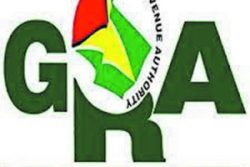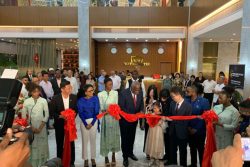 What can be done to improve the environment for visual artists in Guyana? It seems that even when we are brought into rooms before people who purport to want to help us, they are not willing to listen to us. It also seems that support for art and artists matter only when there can be a favourable demonstration of income over expenditure or the furtherance of a particular personal or politicised agenda. But the quiet delight of having a memory triggered about a once joyful time, or the realisation of the intrinsic beauty in the surroundings of our every day is not easily translated into numbers. Similarly, the provocation of a fantastical thought or a line of contemplative considerations and internal inquiries are not easily quantifiable with numbers on a spreadsheet.
What can be done to improve the environment for visual artists in Guyana? It seems that even when we are brought into rooms before people who purport to want to help us, they are not willing to listen to us. It also seems that support for art and artists matter only when there can be a favourable demonstration of income over expenditure or the furtherance of a particular personal or politicised agenda. But the quiet delight of having a memory triggered about a once joyful time, or the realisation of the intrinsic beauty in the surroundings of our every day is not easily translated into numbers. Similarly, the provocation of a fantastical thought or a line of contemplative considerations and internal inquiries are not easily quantifiable with numbers on a spreadsheet.
I think of unfortunate recent developments. Exhibitions are hosted at our National Gallery of Art (NGA) Castellani House (in the world’s fastest-growing economy) with no exhibition booklets. This is a contraction of pre-oil circumstances and not development! Case in point #1: Recently, a senior artist hosted an exhibition of over four dozen works spanning years of approaches there at the NGA. Despite the obvious amount of time, energy, and resources invested in making the work and even shipping some here to Guyana, he could not be supported with an exhibition booklet. Instead, the pages that should have been within one, were printed in large format and unsatisfactorily displayed. Visitors could not walk away with something to read and consider which could enhance their understanding of the artist and his works.
Case in point #2: I think of the four artists who came together to host a show also at the NGA. Space and gallery staff to assist with mounting their work was afforded them. But apparently, little else was funded through the NGA. White paint does not seem to have been available to touch up the inevitable scuff marks that can appear when mounting works on a white wall. Tsk, tsk. But, let’s assume the artists and gallery staff ran out of time to address that important detail so the paint sat unopened and, therefore, unused in someone’s office. But what of the other trappings of the exhibition? The artists themselves provided the items for their wine and cheese opening affair. The artists also printed their banners themselves. Additionally, the limited number of exhibition booklets were the artists’ responsibility to prepare and print. Again, contraction on pre-oil times. And while these provisions by artists may be normal elsewhere, in a space like ours, where artists are minimally supported, this needs to be reconsidered and support given with consistency.
To add insult to injury, there is talk that the Government of Guyana (GoG) through the NGA is no longer acquiring work. Inadequate tax dollars for NGA operations and no tax dollars to buy art? Instead, tax dollars for roads that are built, then quickly ripped up and only partially rebuilt. So, despite this being an exhibition with some wonderful work, it may be that nothing will be acquired for the National Collection where it can be potentially displayed to future generations and studied.
But alas, perhaps the artists don’t mind if their work is not acquired for the National Collection. Because one never knows when they might see it presented to the public again and in what condition it may be in with time. I think of work I have seen in private collections of similar age as work in the National Collection by the same artist. I think too many words are foreign in this Guyana and with the words, the full associated actions. I think of conservation and preservation. I also think of the phrase, ‘dey don’t kay!’
“Who don’t kay?”
The people who need to invest and train the conservators. The people who have to ensure that the requisite materials, tools, and equipment are in place once the people who will care for the art are trained. More words come to mind but I refrain from using them. Not profane words, but words that point to the disregard for the work and the people who make the pictures and the sculptures and the other forms of art that are insufficiently cared for, studied, and presented for viewing.
But alas, I digress from booklets. Slight as they can be, they are important documents. They help to tell a tale of what transpired and may even give insight into the whys and hows of things. They are markers of an unfolding art history. A history that requires comprehensive documentation. Although our artists are increasingly using QR codes to direct audiences to online booklets because they are not funded to print this item, this is inadequate. QR codes disregard technology and technological knowledge gaps now. Furthermore, will these documents be accessible 50 years from now? 100 years from now? How will the technology change and what may be lost in the process? We (the world over) have a history of preserving paper as ticklish as this may be. So, a dual approach to exhibition documentation at a minimum is necessary. Booklets alongside QR codes should be a minimum expectation from GoG taxpayer-funded exhibitions.
Searching in our National Archives for information on a particular Guyanese artist, I am struck by the paucity of exhibition booklets in the relevant boxes. I wonder, were pamphlets or booklets produced to coincide with these exhibitions? I decided I must be looking in the wrong place. There seemed to be a consciousness about who we were and deliberateness about who we were becoming in the 60s. Minutes of festival planning meetings are preserved but where are the booklets for exhibitions hosted? I see indications of painting purchases, but these works are an incomplete indicator of what could have been on the minds of artists. Do we wish to repeat the same possible mistake? Do we wish to forego documentation through modest booklets? But as I pose this question, I am also wishing for comprehensive exhibition catalogues.
I think of the fact that the personal archives of Guyana’s most notable artists are scattered and inaccessible to Guyana-based scholars without Lotto Jackpot winnings to fund the requisite research. I think of how Guyana is steadily increasing in wealth but not the wealth that allows us to value art over the bars and gambling spots, shopping and eating out for routine entertainment. I think about the billions spent on things that quickly deteriorate or are inadequately built or designed while the products of human creativity that can enhance our experience of oil-Guyana are left to struggle in their development for lack of funds assigned to develop talent, support talent, and document talent. I think about the aspiring innovators of dance, music, and art, the forms that may not garner mass support but need to be nurtured, nonetheless. And I think perhaps it is better to pull the weeds from my vegetable patch than to think about these things.







